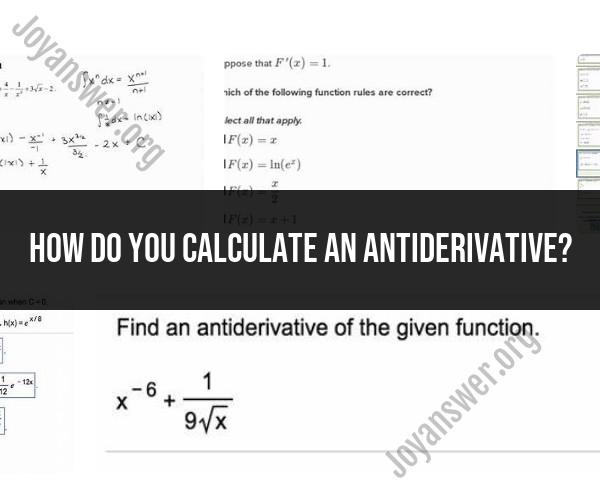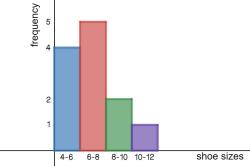How do you calculate an antiderivative?
Calculating antiderivatives, also known as indefinite integrals, is a fundamental concept in calculus. It involves finding a function whose derivative is the given function. Antiderivatives have various applications in mathematics, physics, engineering, and other fields. Here are some techniques and applications for calculating antiderivatives:
Techniques for Calculating Antiderivatives:
Basic Rules:
- The Power Rule: ∫x^n dx = (1/(n+1)) * x^(n+1) + C, where n ≠ -1.
- Constant Rule: ∫c dx = cx + C.
Integration by Parts:
- ∫u dv = uv - ∫v du, where u and v are differentiable functions.
Substitution (Change of Variables):
- ∫f(g(x)) g'(x) dx = ∫f(u) du, where u = g(x).
Trigonometric Integrals:
- ∫sin(x) dx = -cos(x) + C.
- ∫cos(x) dx = sin(x) + C.
- ∫sec^2(x) dx = tan(x) + C.
Partial Fractions:
- Used to simplify complex rational functions before integrating.
Exponential and Logarithmic Integrals:
- ∫e^x dx = e^x + C.
- ∫(1/x) dx = ln|x| + C.
Applications of Antiderivatives:
Area Under a Curve:
- The integral of a function represents the area under the curve of that function within a specified interval.
Physics and Engineering:
- Antiderivatives are used to calculate quantities such as displacement, velocity, acceleration, and work in physics and engineering problems.
Economics and Finance:
- Antiderivatives are used to calculate accumulated quantities, such as total cost, total revenue, and total profit, in economics and finance.
Probability and Statistics:
- Antiderivatives are used in probability density functions to calculate probabilities of continuous random variables.
Optimization Problems:
- Antiderivatives can help find maximum or minimum values by analyzing critical points and inflection points.
Electromagnetism:
- Antiderivatives are used to calculate electric potential and electric field in electromagnetic problems.
Biology and Medicine:
- Antiderivatives are used to model growth rates, decay rates, and concentrations in biological and medical contexts.
Geometry and Trigonometry:
- Antiderivatives are used to find arc lengths, areas of parametric curves, and solutions to trigonometric equations.
It's important to note that antiderivatives can have constant values added (C) due to the nature of integration. When calculating antiderivatives, always remember to include the constant of integration (C) to account for all possible solutions.











